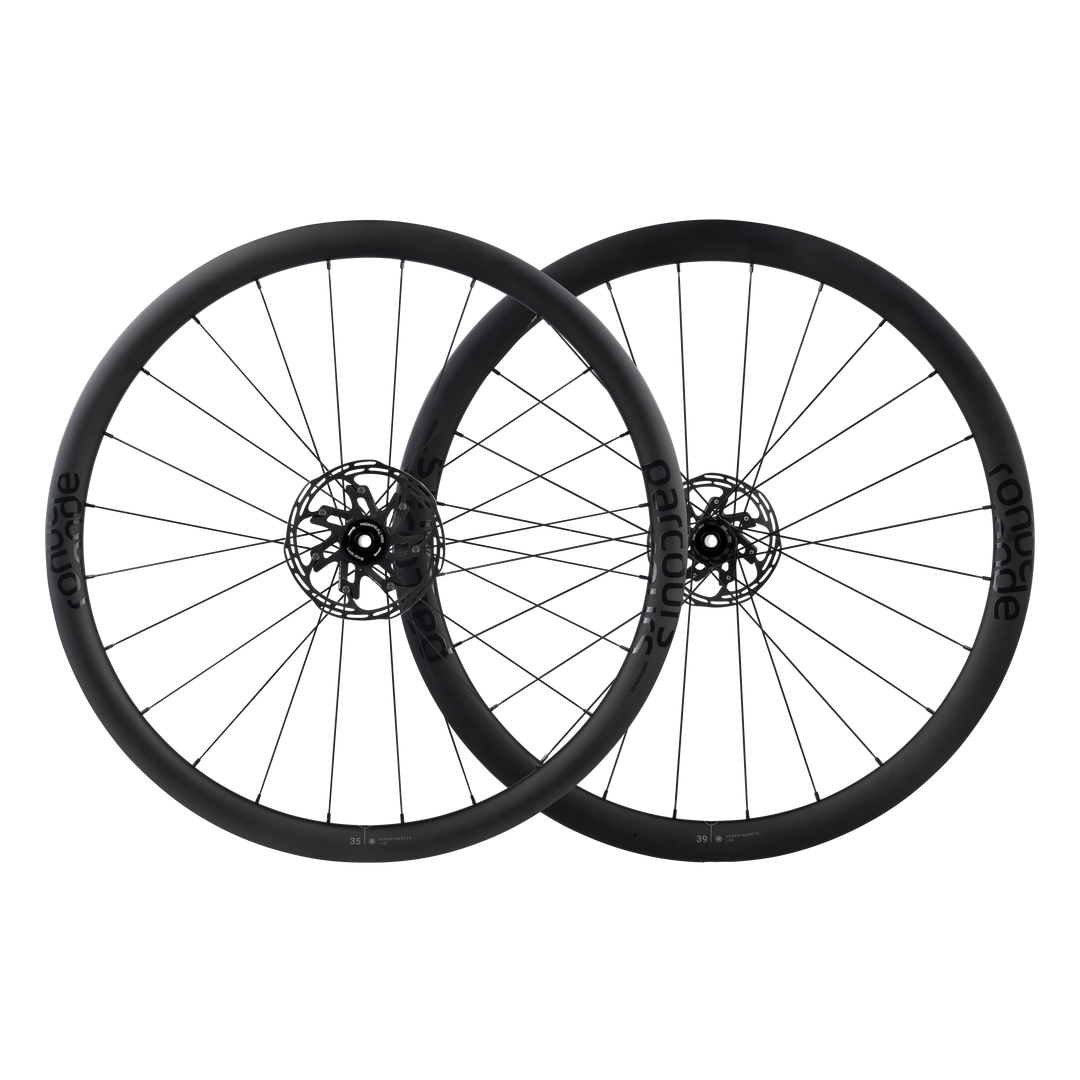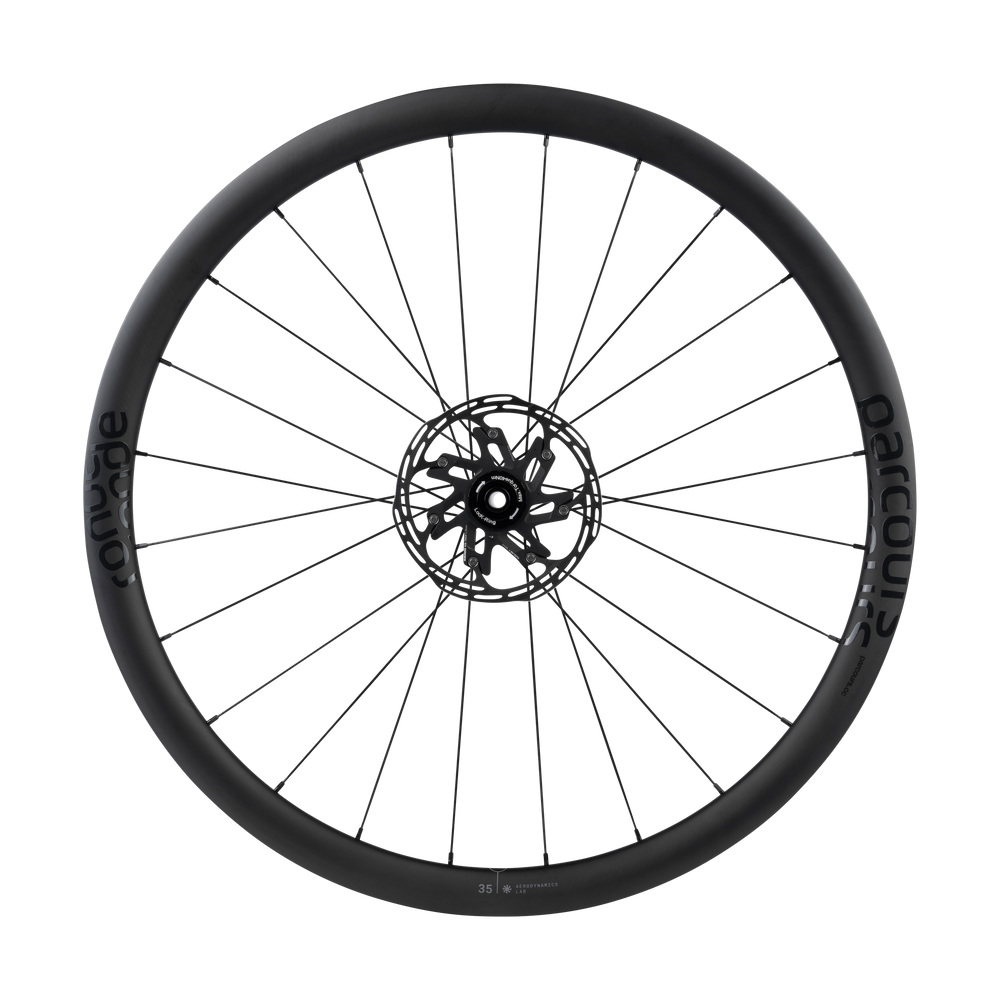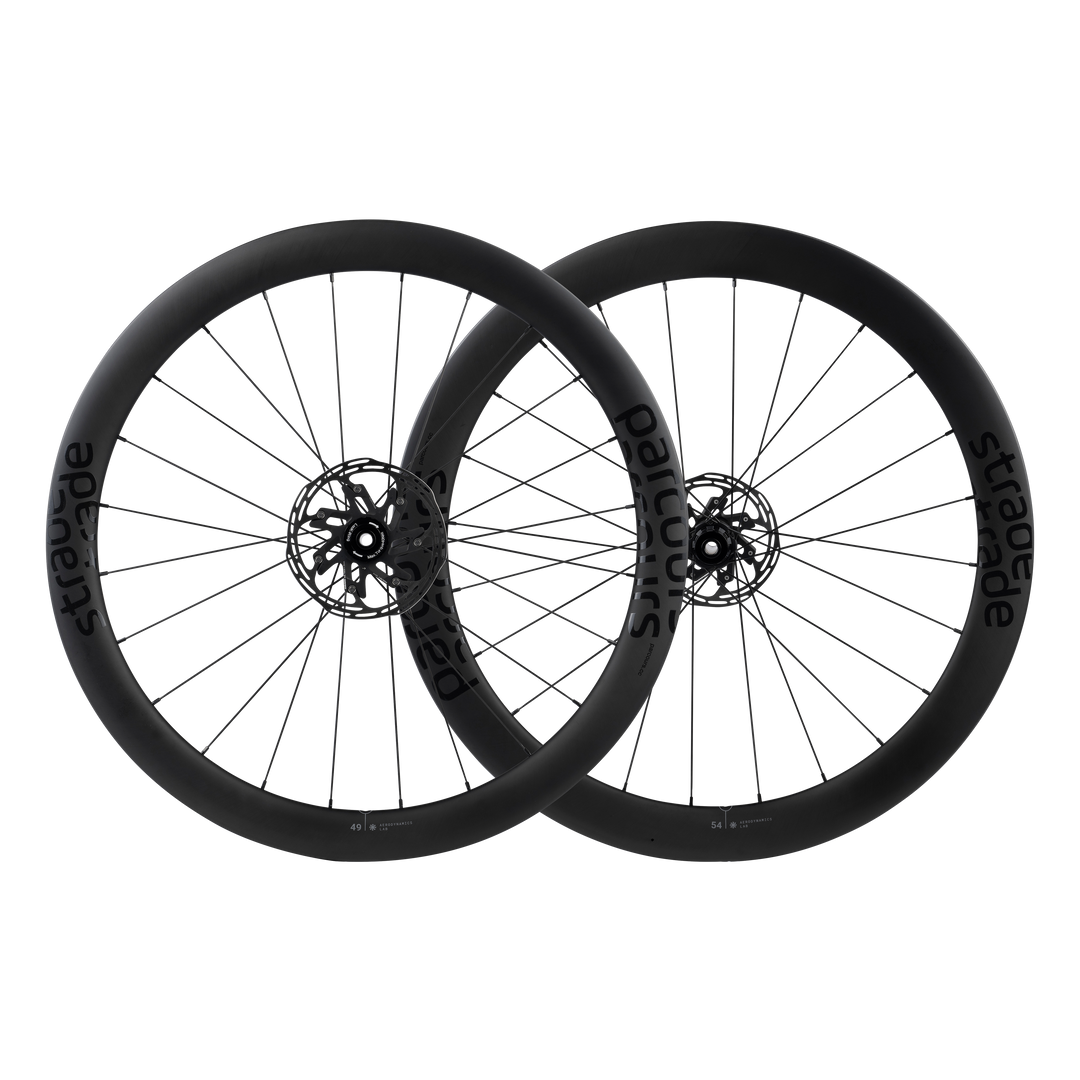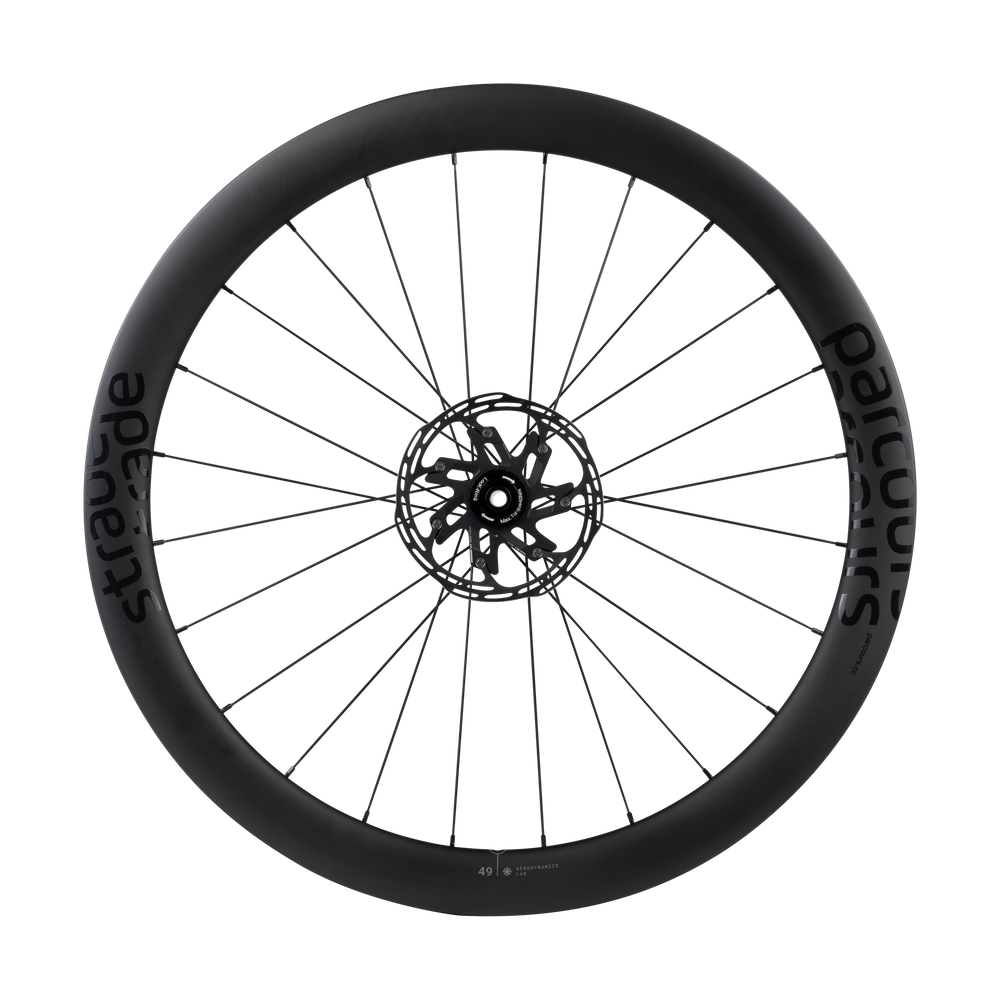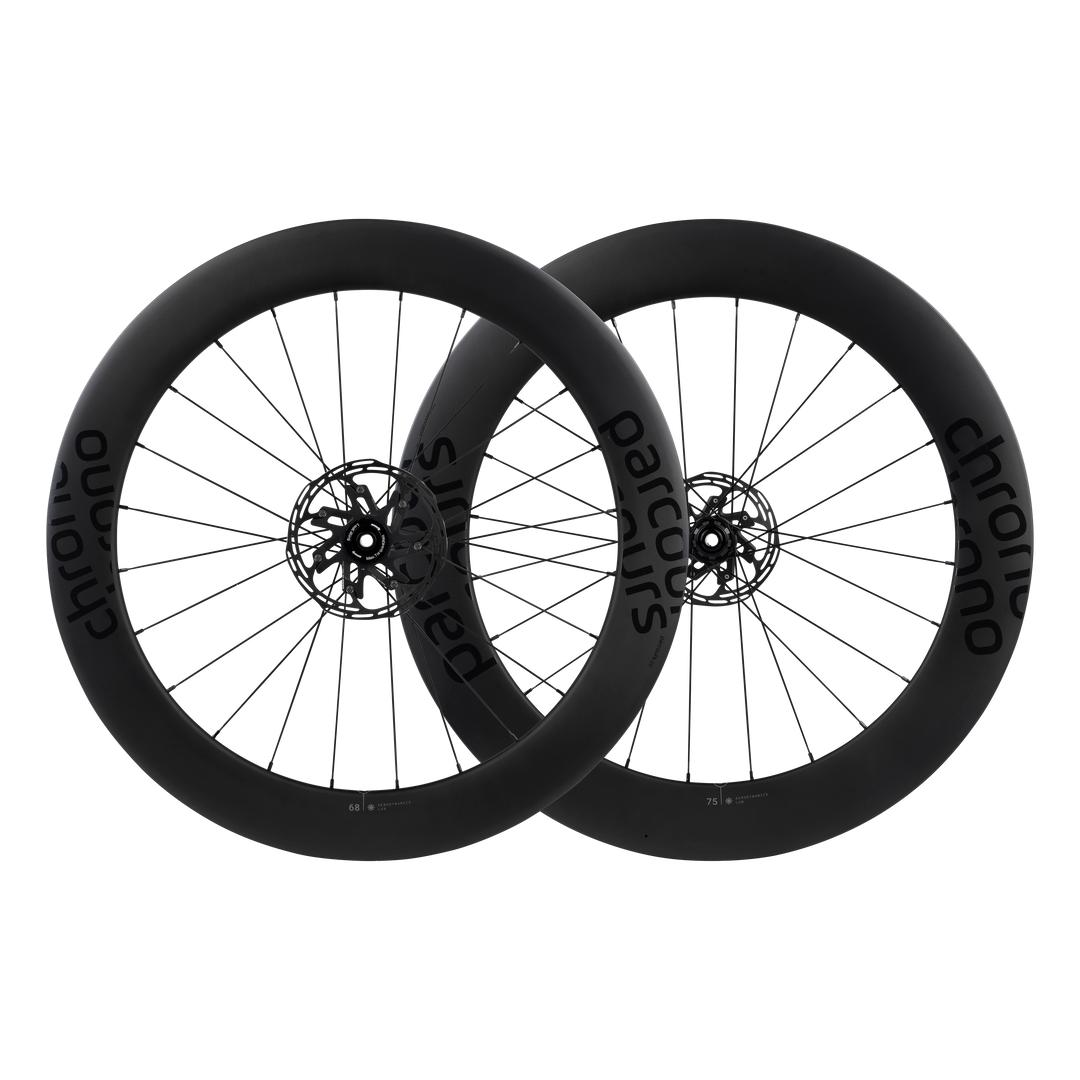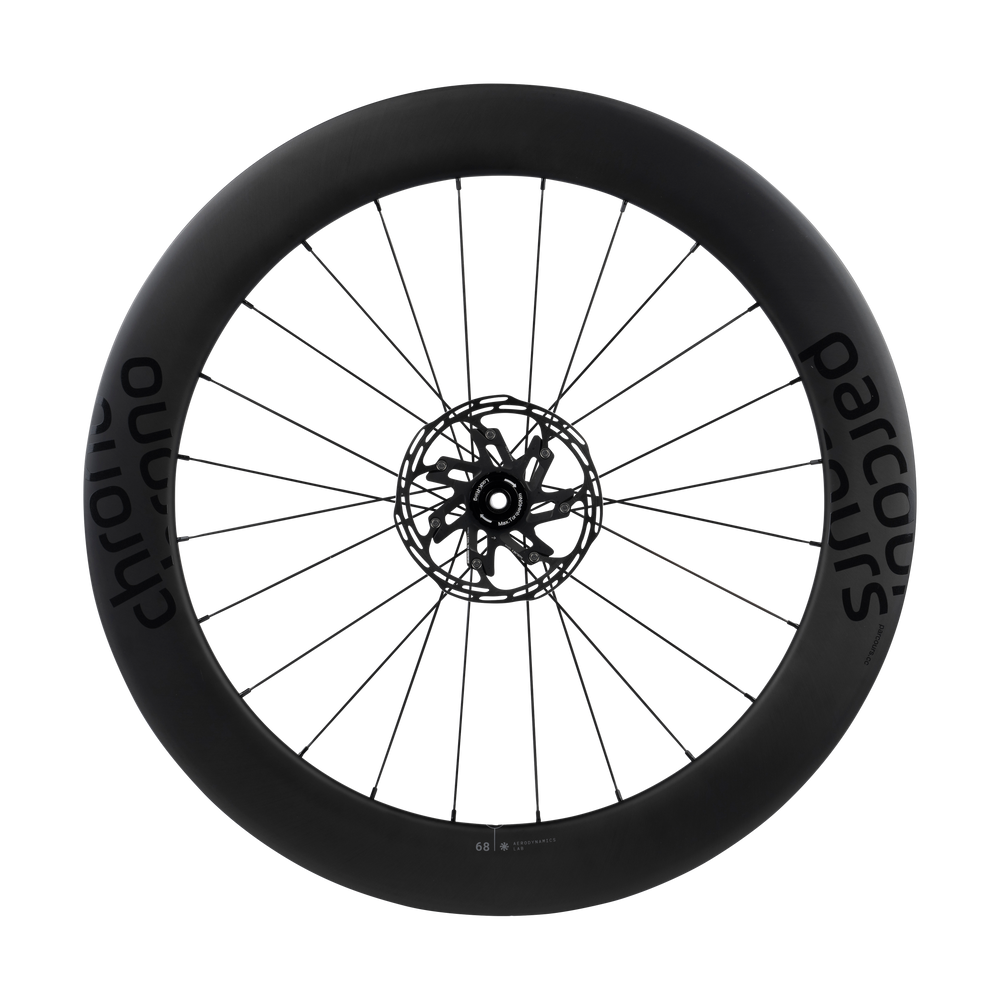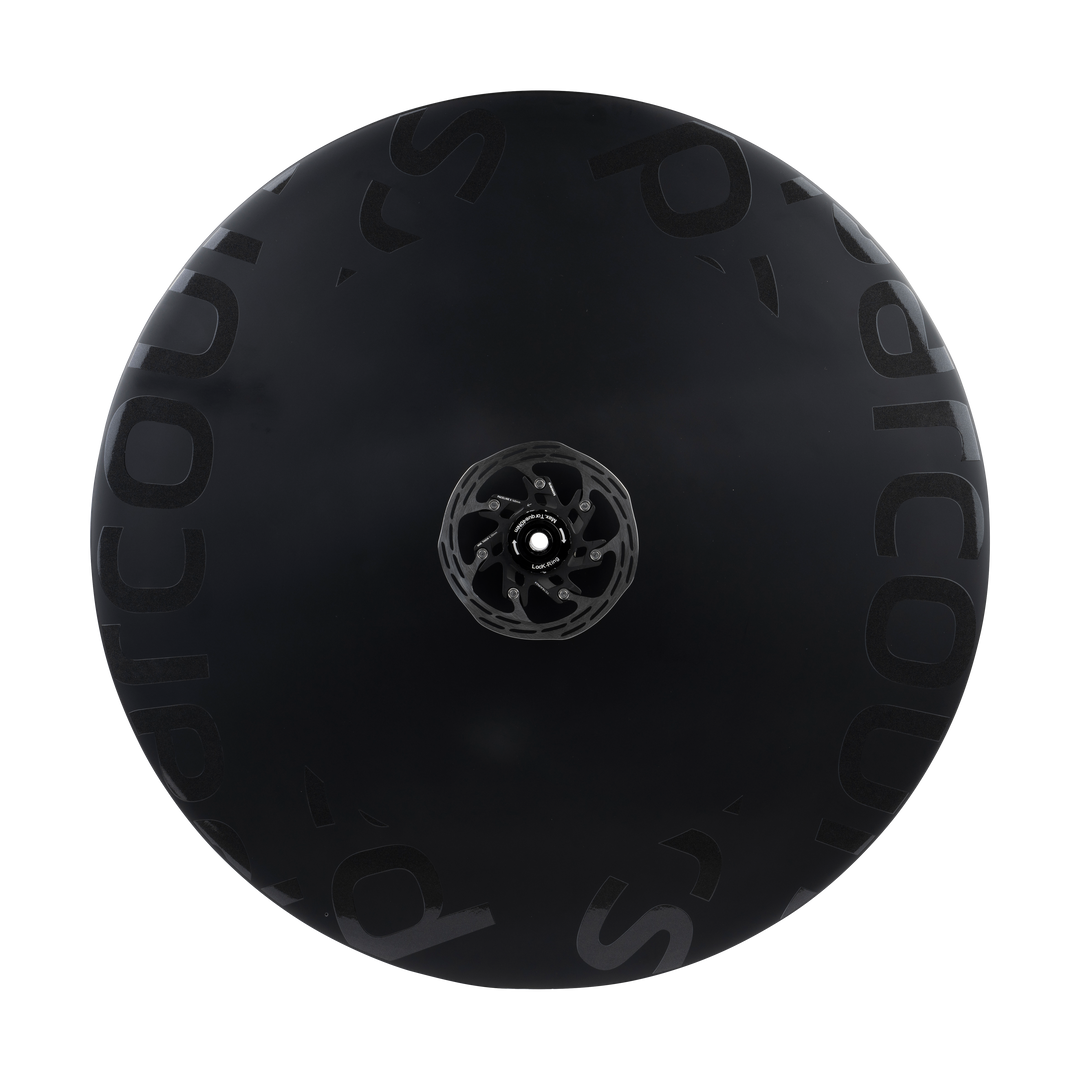
HANDLING STABILITY
Whilst aerodynamics has always been at the forefront of our product development, a fast wheel is immediately made redundant as soon as you’re forced out of the aerobars or into a more upright position to control the bike in a crosswind. Equally, if riding in a group, poor response to crosswinds can be dangerous to both yourself and riders nearby. Handling performance therefore must also be considered when evaluating a rim profile.
This is of particular relevance for the front wheel. Only the front wheel is free to rotate on its axis (through the handlebars) and will therefore have a far greater impact on bike handling. Furthermore, in most riding positions, a greater proportion of the overall system weight is on the rear wheel.
STABILITY COMPARISON
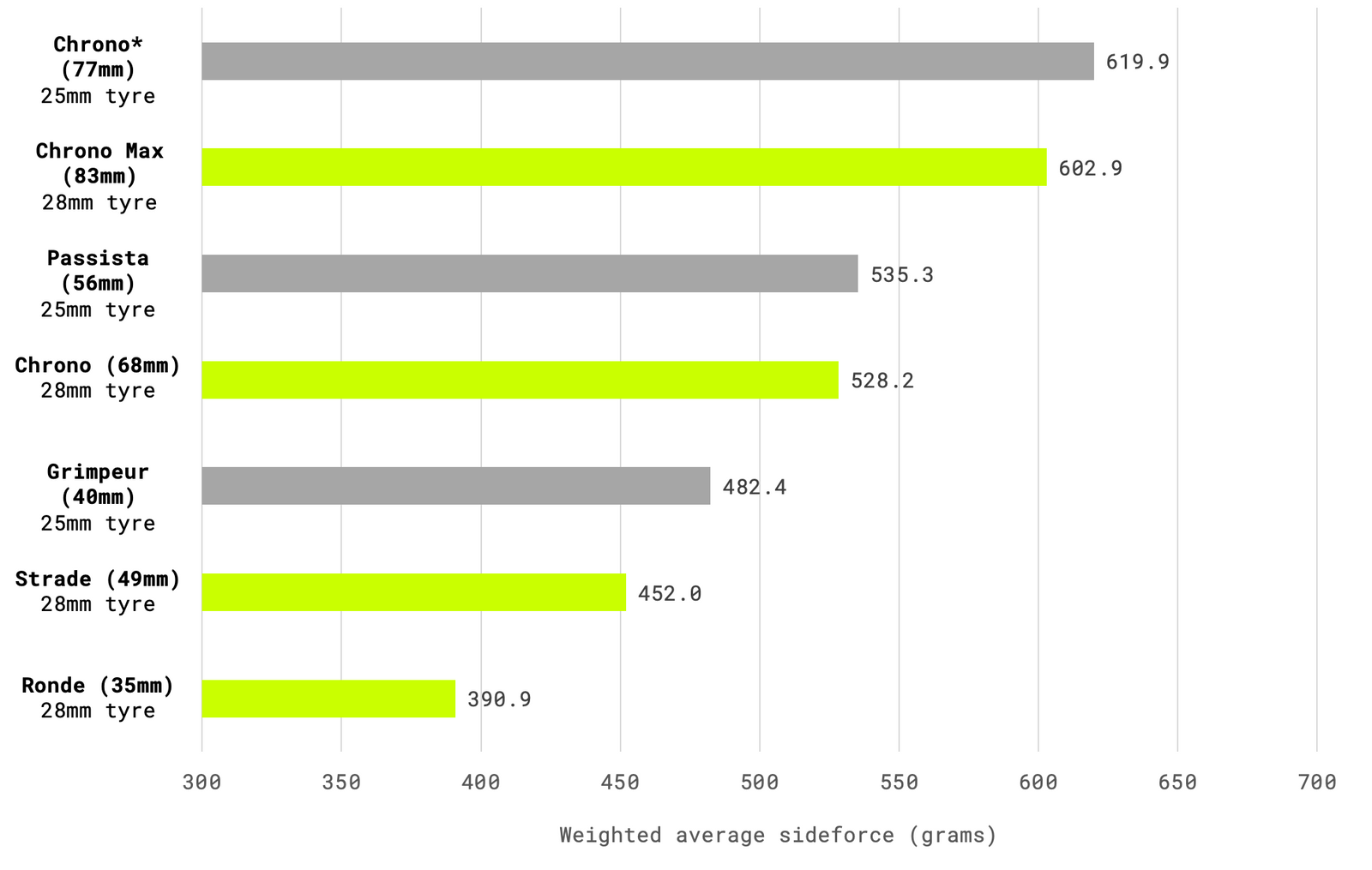
- All front wheels tested with a Continental GP5000TR tyre; Aerodymamics Lab models with a 28mm, prior generation with a 25mm
- Weighted average yaw angles applied based on Parcours/NTU testing (Project #thinkwider)
Disc wheel stability
Whilst it may initially seem counterintuitive, our testing has shown that riding a rear disc wheel will actually enhance handling stability in high wind conditions.
When riding a spoked rear wheel, the centre of pressure is positioned between the front & rear wheel. The front wheel is free to turn on its axis and is therefore impacted by stronger crosswinds, creating instability.

However, with a rear disc wheel, the centre of pressure moves further to the rear of the bike. This reduces the impact of crosswinds by increasing the distance between turning axis & centre of pressure.
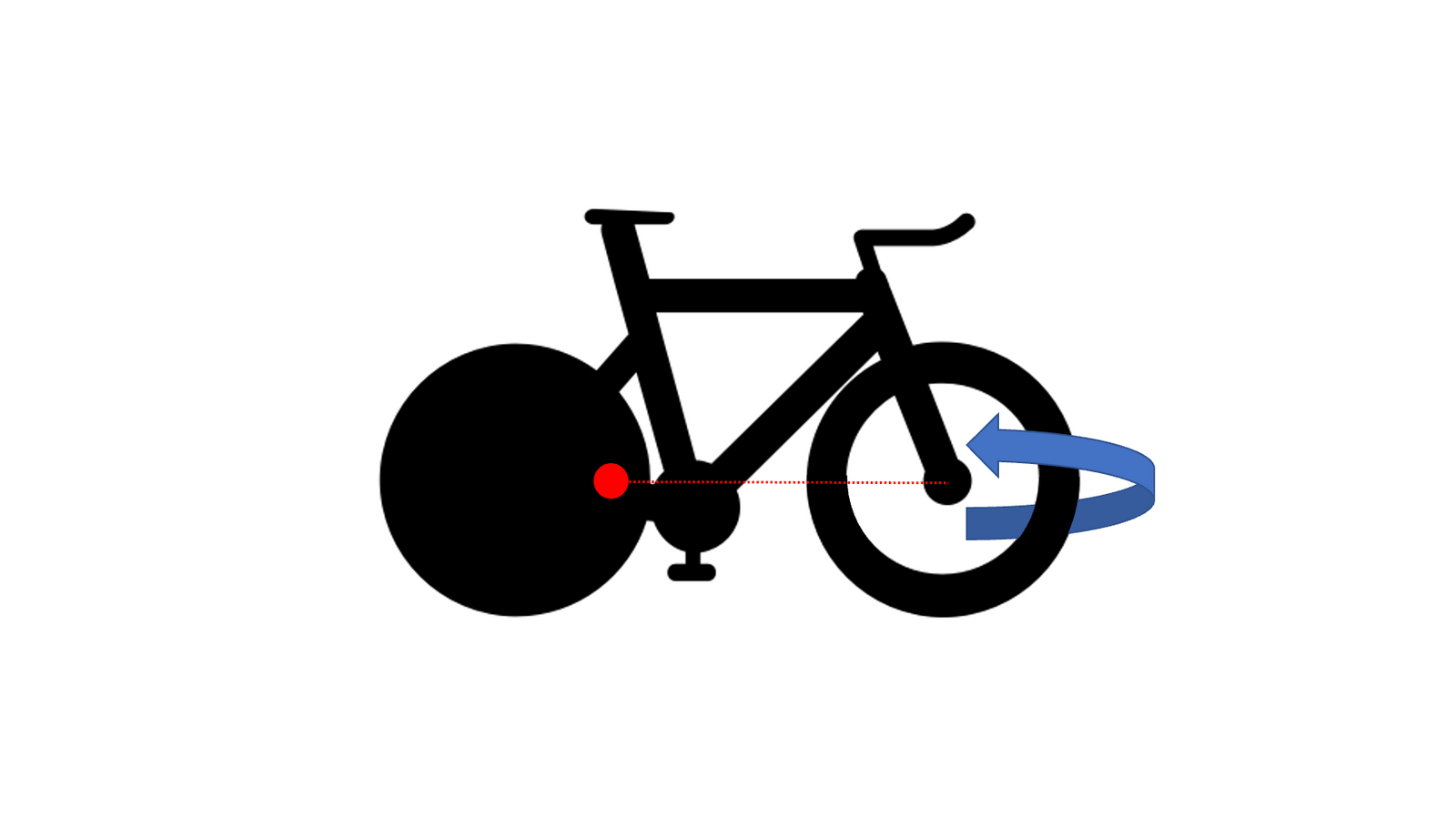
The impact is similar to lowering your centre of gravity when someone tries to push you over. By moving the centre of gravity further from the point at which you are being pushed, you can resist a far higher force before toppling.
Similarly, with your bike stability, by moving the centre of pressure away from the turning axis of the front wheel, you can exert a higher sideways force (crosswind) before experiencing instability.
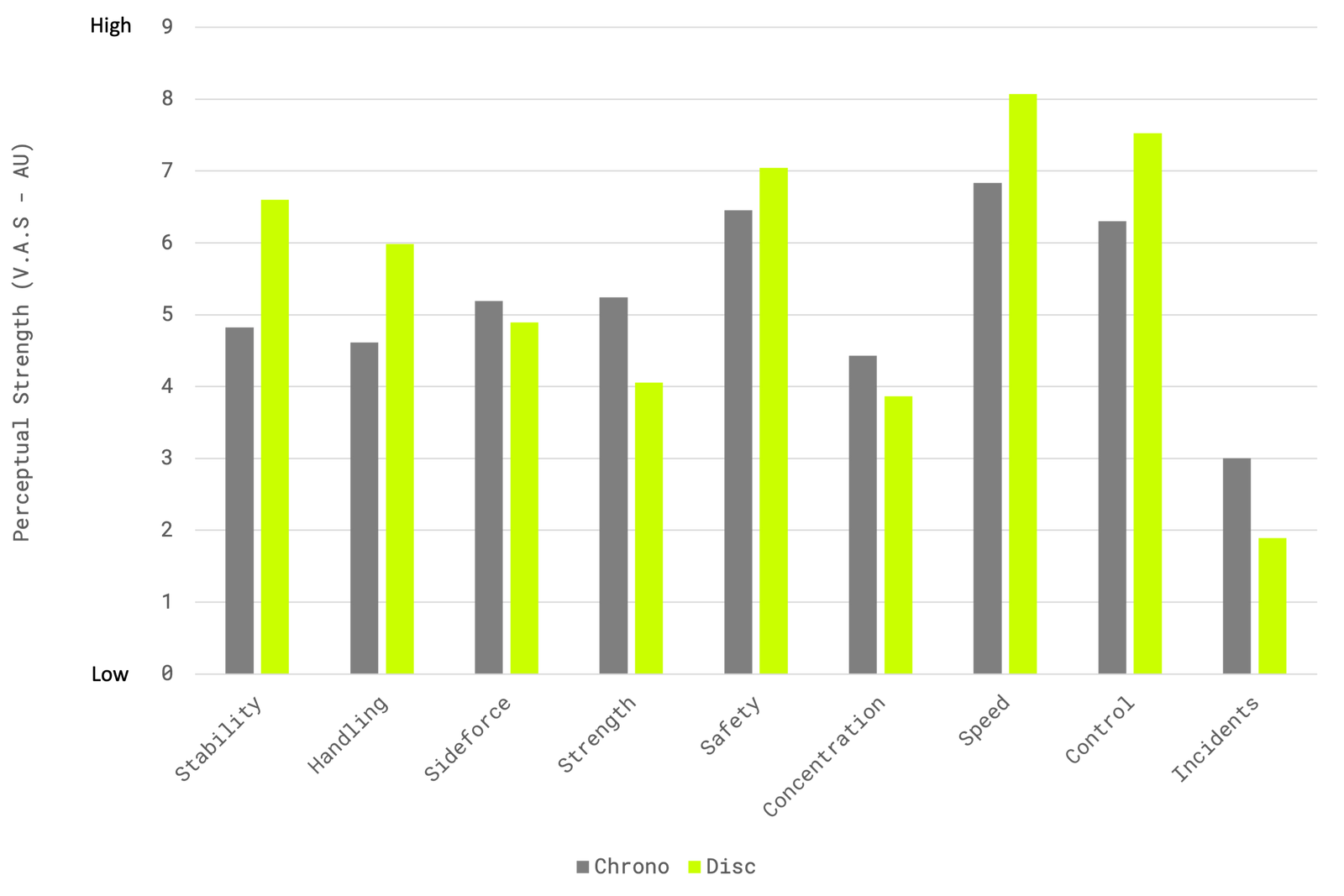
Research conducted in partnership with the Sports Engineering Department at Nottingham Trent University asked a number of test riders to record their perception of a range of factors using a Visual Analogue Scale. The results were able to show a material improvement in performance when running a rear disc wheel, including:
- 37% increase in reported stability
- 23% reduction in perceived strength of crosswinds
- 19% increase in reported control of the bike


